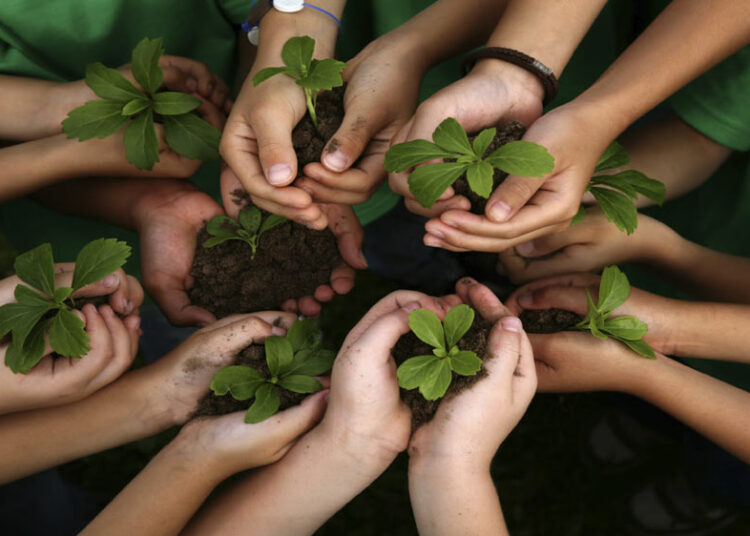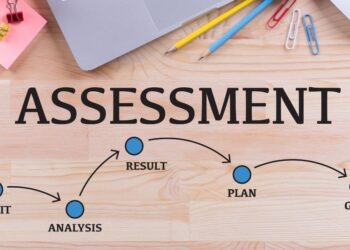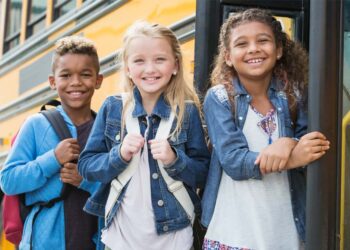Eco-Innovators: Inspiring the Next Generation of Environmental Champions
Discover how integrating environmental education into curricula is shaping the future generation of eco-conscious innovators and problem-solvers.
1. The Proximity of Pollution Sources to Schools
The EPA’s “America’s Children and the Environment” (2025) reveals a concerning statistic: over 40% of U.S. public schools are situated within a half-mile radius of a pollution source, including Superfund toxic sites. This proximity poses significant health risks to students, underscoring the urgent need for environmental education initiatives.
2. Fostering Climate Change Awareness Through Education
Integrating environmental education into core curricula is crucial for raising awareness about climate change and its impacts. By providing students with the knowledge and tools to understand environmental challenges, schools can empower them to become active participants in finding sustainable solutions.
3. The Rise of “Eco-Innovators” Programs
Innovative programs like “Eco-Innovators” are gaining traction in schools, promoting interdisciplinary practices that blend environmental science with hands-on projects. These initiatives offer students practical experience in areas such as campus sustainability, air quality monitoring, and the development of green technologies.
4. Equipping Future Environmental Champions
Through these educational programs, students are not only gaining knowledge but also developing critical skills and a sense of responsibility towards the environment. This comprehensive approach prepares them to be the next generation of environmental champions, equipped to tackle complex environmental issues.
5. UNESCO’s Call for Global Environmental Education
Recognizing the importance of environmental education, UNESCO advocates for its inclusion as a core curriculum component in all countries by 2025. This global initiative aims to ensure that every student acquires the skills, values, and responsibility needed to drive sustainable change and create a healthier planet for future generations.
Beyond the Textbook: Nature-Based Learning Adventures for Students
Discover how nature-based education is transforming learning, fostering environmental stewardship, and boosting student well-being.
1. The Rise of Nature-Based Education
Over the past fifteen years, nature-based education has experienced a significant surge in popularity, especially at the preschool and kindergarten levels. What was once a niche approach has blossomed into a widespread movement, emphasizing experiential learning outside traditional classrooms. This shift reflects a growing recognition of the profound benefits that direct engagement with the natural world can offer to young learners.
2. U.S. Nature-Based Preschools on the Rise
In the United States alone, the number of nature-based preschools reached over 800 in 2023, signaling a substantial increase from just a few dozen programs fifteen years prior. While concrete figures for 2024 are not available, the trend clearly indicates continued growth and expansion in this educational sector.
3. Benefits for Urban Youth
Research indicates that nature-based education is particularly beneficial for urban youth. By providing opportunities to connect with nature, these programs help improve students’ physical and psychological well-being, while also reducing their sense of disconnection from the environment. These experiences are crucial in fostering a sense of environmental stewardship among those who may have limited access to natural settings.
4. Cultivating Environmental Stewardship
Beyond academic and psychological advantages, nature-based education plays a vital role in cultivating environmental stewardship. Direct engagement with natural environments can help children overcome fears related to nature, fostering a deeper appreciation and understanding of the importance of protecting our planet. This hands-on approach empowers the next generation to become advocates for a sustainable future.
Recycling Reinvented: Turning Waste Into Educational Wonders
Explore how innovative recycling programs are transforming waste into valuable learning opportunities, fostering a greener future for students.
1. School Recycling Programs in Action
Wake County, North Carolina, demonstrates the power of integrating recycling initiatives into the educational system. These programs not only divert waste from landfills but also serve as a platform for environmental education, fostering a sense of responsibility among students.
2. “Feed the Bin” Program: Education Beyond Collection
Beyond mere collection, the “Feed the Bin” program enriches the learning experience by providing K-12 presentations on composting and sustainable waste management. This comprehensive approach ensures that students understand the importance of recycling and its role in a sustainable future.
3. Cultivating Environmental Awareness
By integrating recycling into the school environment and curriculum, these initiatives are effectively cultivating environmental awareness among students. They learn about the importance of reducing waste, conserving resources, and adopting sustainable practices that will benefit them and the planet in the long run.
Climate Conscious Classrooms: Empowering Students to Act on Global Warming
Explore how environmental factors are increasingly intertwined with education, shaping the future of learning and sustainability.
1. Environmental Pressures on US Schools
The connection between climate change and education is becoming increasingly clear. A significant percentage of schools face direct environmental challenges that impact student health and learning.
2. Proximity to Pollution Sources
It’s alarming to consider how many schools are located near potential hazards. Over 40% of public schools in the United States are situated within a short distance of pollution sources, highlighting a critical environmental justice issue.
3. Impact of Poor Air Quality
Poor air quality, often exacerbated by climate-related events, poses another significant challenge. Thousands of schools experience extended periods of unhealthy air, affecting students’ well-being and academic performance.
4. Education as a Tool for Change
Fortunately, education itself can be a powerful tool in addressing these issues. Studies show that higher levels of education correlate with increased awareness of climate change and a greater willingness to take action.
5. Preparing Future Leaders
By integrating environmental education into curricula, we can empower students to become informed and proactive leaders in sustainability. This approach not only mitigates the immediate impacts of environmental issues on schools but also prepares the next generation to tackle global challenges.
Green Schools in Action: Real-Life Success Stories and Transformative Projects
Explore how schools are championing sustainability through environmental education and hands-on projects, creating a greener future for students and communities alike.
1. System-Wide Sustainability Initiatives
Boston Public Schools are actively pursuing Whole School Sustainability, focusing on equitable educational conditions that support environmental education. These initiatives include improving access to drinking water, enhancing indoor air quality, and creating outdoor teaching spaces. The district is also investing in renewable energy, energy-efficient buildings, and aiming for zero waste operations.
2. Community Engagement in Green Initiatives
The commitment to greener schools is reflected in the high engagement from various stakeholders. Spring 2024 surveys reveal substantial participation from students, teachers, staff, and families, demonstrating a united front in shaping environmentally conscious schools.
3. Nationwide Trends in Environmental Education
These efforts in Boston align with broader trends across the nation. Schools are increasingly integrating environmental literacy into their curricula and promoting student-led initiatives. By encouraging projects like energy audits and waste reduction campaigns, schools are empowering students to actively contribute to a sustainable future.
Q&A
Question 1: What is the concerning statistic revealed by the EPA’s “America’s Children and the Environment” report regarding the proximity of pollution sources to schools?
Answer: The report reveals that over 40% of U.S. public schools are located within a half-mile radius of a pollution source, including Superfund toxic sites. This proximity poses significant health risks to students and highlights the urgent need for environmental education.
Question 2: What are the key benefits of nature-based education, particularly for urban youth?
Answer: Nature-based education, especially beneficial for urban youth, improves students’ physical and psychological well-being by connecting them with nature. It reduces feelings of environmental disconnection and fosters environmental stewardship, crucial for those with limited access to natural settings.
Question 3: How does the Wake County, North Carolina “School Recycling” program demonstrate the impact of integrating recycling initiatives into education?
Answer: Wake County’s program shows tangible results in waste reduction. Public schools collectively recycled significant tons of paper, metal cans, and plastic bottles. The “Feed the Bin” component adds educational presentations on composting and sustainable waste management, enriching the learning experience beyond mere collection.
Question 4: What are some of the environmental pressures impacting US schools, and how is education being used as a solution?
Answer: Many US schools face challenges like proximity to pollution sources (over 40% are near pollution sources) and poor air quality (thousands experience extended periods of unhealthy air). Education is a key solution; integrating environmental education into curricula increases climate change awareness and encourages proactive sustainability leadership among students.
Question 5: How are Boston Public Schools demonstrating system-wide sustainability initiatives, and what level of community engagement is involved?
Answer: Boston Public Schools are implementing Whole School Sustainability, focusing on improving water access, indoor air quality, outdoor learning spaces, renewable energy, and zero-waste operations. High community engagement is evident, with strong participation rates in Spring 2024 climate surveys from students, teachers, staff, and families, demonstrating a united effort towards creating environmentally conscious schools.












